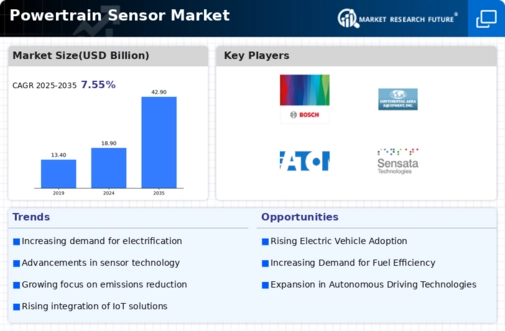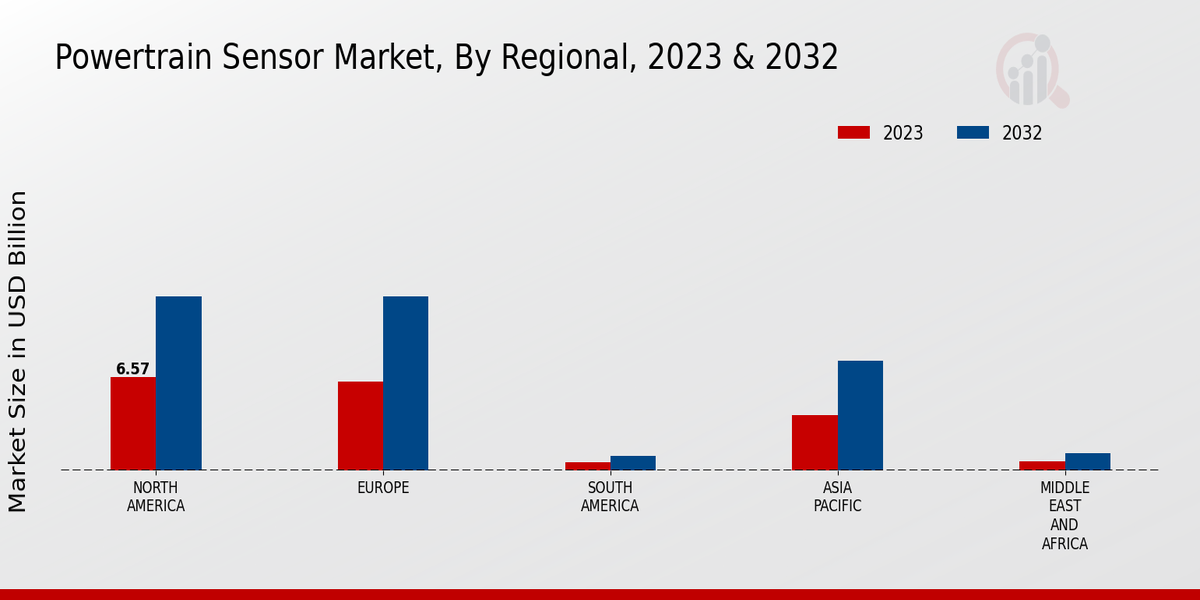Market Growth Chart
The Global Powertrain Sensor Market Industry is projected to experience significant growth, with a market size of 18.9 USD Billion in 2024 and an anticipated increase to 42.9 USD Billion by 2035. This growth trajectory indicates a robust CAGR of 7.75% from 2025 to 2035, reflecting the increasing integration of advanced sensor technologies in automotive powertrains.
Regulatory Compliance
The Global Powertrain Sensor Market Industry is heavily influenced by stringent regulatory requirements aimed at reducing vehicle emissions and enhancing safety standards. Governments worldwide are implementing regulations that necessitate the use of advanced sensors for monitoring emissions and ensuring compliance with environmental standards. This regulatory landscape compels manufacturers to invest in innovative sensor technologies that can provide accurate data for compliance. As a result, the market is poised for growth, with a projected CAGR of 7.75% from 2025 to 2035, reflecting the increasing importance of regulatory compliance in automotive design.
Rising Consumer Awareness
The Global Powertrain Sensor Market Industry is benefiting from rising consumer awareness regarding vehicle performance and environmental impact. As consumers become more informed about the benefits of advanced powertrain technologies, there is a growing demand for vehicles equipped with high-performance sensors. These sensors not only enhance driving experience but also contribute to lower emissions and improved fuel economy. This shift in consumer behavior is likely to drive market growth, as manufacturers respond to the demand for more efficient and environmentally friendly vehicles.
Technological Advancements
The Global Powertrain Sensor Market Industry is experiencing rapid technological advancements that enhance vehicle performance and efficiency. Innovations such as advanced driver-assistance systems (ADAS) and electric vehicle (EV) technologies are driving the demand for sophisticated sensors. These sensors provide critical data on engine performance, fuel efficiency, and emissions control, which are essential for meeting stringent regulatory standards. As a result, the market is projected to reach 18.9 USD Billion in 2024, reflecting the growing emphasis on integrating cutting-edge technology into powertrain systems.
Growth of Electric Vehicles
The Global Powertrain Sensor Market Industry is witnessing substantial growth due to the increasing adoption of electric vehicles (EVs). As the automotive industry transitions towards electrification, the demand for specialized sensors that monitor battery performance, thermal management, and energy efficiency is on the rise. This shift is not only driven by consumer preferences for eco-friendly options but also by government incentives promoting EV adoption. By 2035, the market is anticipated to reach 42.9 USD Billion, underscoring the pivotal role of powertrain sensors in the evolving automotive landscape.
Increasing Demand for Fuel Efficiency
The Global Powertrain Sensor Market Industry is significantly influenced by the rising demand for fuel-efficient vehicles. Consumers and manufacturers alike are prioritizing technologies that reduce fuel consumption and lower emissions. Powertrain sensors play a crucial role in optimizing engine performance and enhancing fuel efficiency. This trend is further supported by government regulations aimed at reducing carbon footprints. The market is expected to grow at a CAGR of 7.75% from 2025 to 2035, indicating a robust shift towards more sustainable automotive solutions.






